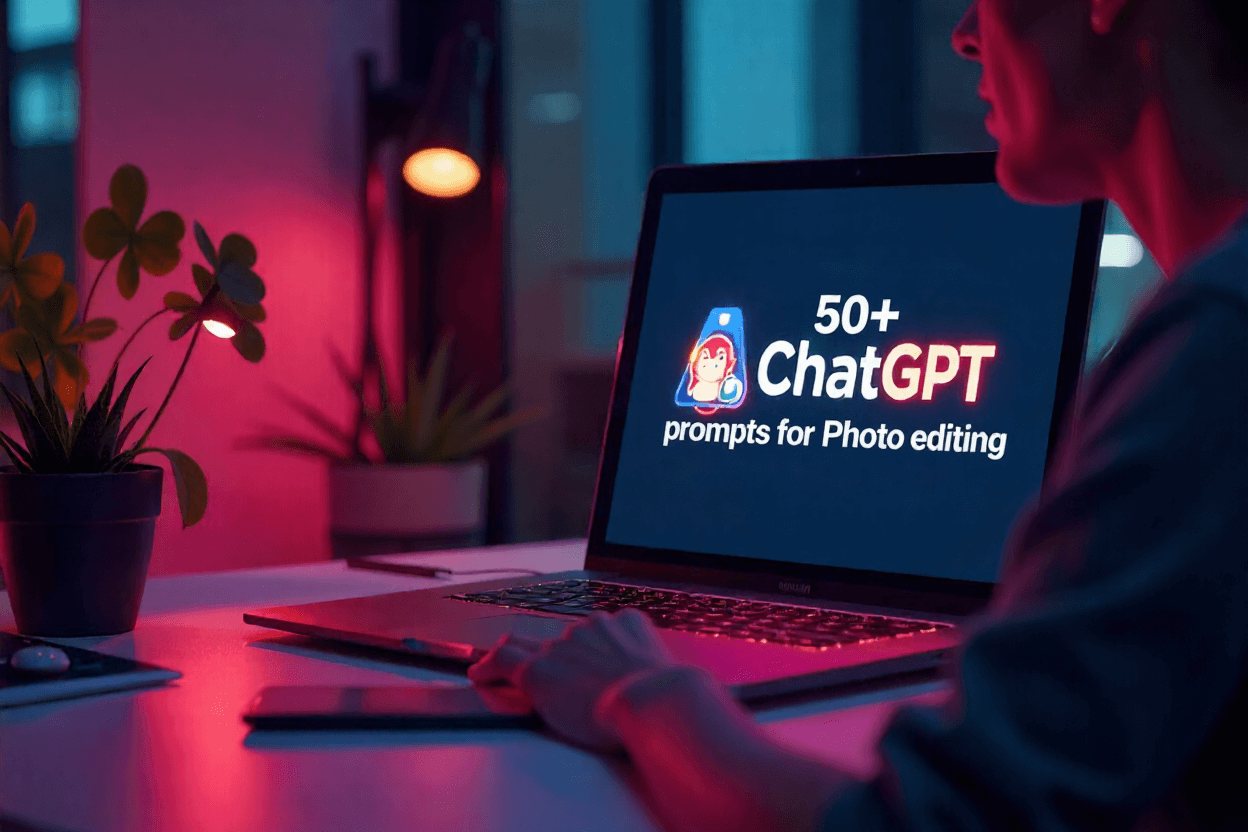
In today’s digital age, the landscape of marketing is continually evolving, and one of the most significant shifts has been the rise of user-generated content (UGC). From social media posts to online reviews, UGC has become a powerful tool for brands to leverage the voices and experiences of their customers. By harnessing the content created by users, brands can not only increase authenticity but also turn their customers into enthusiastic brand ambassadors.
User-generated content refers to any content created by individuals rather than brands themselves. This can include photos, videos, testimonials, reviews, blog posts, and more. What makes UGC so valuable is its authenticity and credibility. Unlike traditional marketing materials, which are often perceived as biased, UGC is seen as more genuine because it comes directly from the users themselves.
In this blog post, we will explore the concept of user-generated content and its role in turning customers into brand ambassadors. We will delve into the strategies for encouraging and showcasing UGC, identifying and engaging brand ambassadors, and measuring the impact of UGC on brand awareness and engagement. Additionally, we will discuss some of the challenges and risks associated with UGC and provide insights on how brands can overcome them.
Join us as we delve into the world of user-generated content and discover how it can transform your customers into passionate advocates for your brand.
Understanding User-Generated Content
User-generated content (UGC) encompasses a broad spectrum of content that is created by users rather than brands or organizations themselves. This content can take various forms, including but not limited to:
Social Media Posts
Users share photos, videos, and text posts on platforms like Instagram, Facebook, Twitter, and TikTok.
Product Reviews and Testimonials
Customers provide feedback and share their experiences with products or services on review platforms, e-commerce websites, and social media.
Blog Posts and Articles
Users write about their experiences, opinions, and recommendations about a particular brand, product, or topic on personal or third-party blogs.
Video Content
Users create and share videos on platforms like YouTube, Vimeo, and Snapchat, showcasing product demonstrations, tutorials, reviews, and more.
Podcasts
Users record audio content discussing various topics, including their experiences with brands, products, and services.
Forum Discussions
Users engage in conversations and discussions on forums and online communities, sharing insights, tips, and opinions.
The key characteristic that distinguishes UGC from other forms of content is its authenticity and credibility. Since UGC is generated by real users based on their genuine experiences and opinions, it tends to resonate more strongly with other consumers. This authenticity can significantly influence purchasing decisions and brand perceptions.
Furthermore, UGC often serves as social proof, demonstrating to potential customers the value and satisfaction associated with a brand or product. When users see positive experiences shared by their peers, they are more likely to trust and engage with the brand themselves.
Brands can leverage UGC in various ways to enhance their marketing efforts, including:
Increasing Brand Awareness
UGC can help expand a brand’s reach as users share their content with their networks, exposing the brand to new audiences.
Building Trust and Credibility
Authentic user-generated content enhances a brand’s credibility by providing social proof of its value and quality.
Driving Engagement and Conversions
UGC can encourage audience engagement and prompt action, such as making a purchase or sharing the content with others.
Read More: Influencer Marketing on Social Media: Finding the Right Partners
The Power of Brand Ambassadors
Brand ambassadors are individuals who are passionate about a brand and voluntarily advocate for it, often sharing their positive experiences with others. These individuals go beyond being loyal customers; they actively promote and endorse the brand, acting as influential advocates within their social circles and communities. The power of brand ambassadors lies in their ability to:
Build Trust and Credibility
Brand ambassadors are perceived as authentic and trustworthy sources of information. When they endorse a brand, their recommendations carry weight and credibility, helping to establish trust with potential customers.
Amplify Brand Reach and Awareness
Brand ambassadors extend a brand’s reach by sharing their experiences and recommendations with their networks, including friends, family, and followers on social media. This word-of-mouth promotion can significantly increase brand visibility and awareness.
Create Authentic Connections
Brand ambassadors connect with consumers on a personal level, sharing relatable stories and experiences that resonate with their audience. This authenticity fosters genuine connections and emotional engagement with the brand.
Drive Engagement and Loyalty
Brand ambassadors actively engage with the brand, participating in discussions, providing feedback, and advocating for its products or services. Their enthusiasm and loyalty inspire others to become more engaged with the brand and foster long-term loyalty among existing customers.
Influence Purchase Decisions
Brand ambassadors can influence the purchasing decisions of their peers. When they share positive experiences and recommendations, they can sway others to choose the brand over competitors, ultimately driving sales and revenue.
Provide Valuable Feedback
Brand ambassadors often serve as valuable sources of feedback for the brand, offering insights into customer preferences, pain points, and opportunities for improvement. Their feedback can inform product development, marketing strategies, and overall brand direction.
Strategies for Encouraging User-Generated Content
Encouraging user-generated content (UGC) requires proactive engagement and incentivization to motivate customers to share their experiences and opinions about your brand. Here are some effective strategies for encouraging UGC:
Create Shareable Experiences
Design products, services, or experiences that naturally lend themselves to being shared on social media or other platforms. Unique and memorable experiences are more likely to prompt customers to create and share content.
Leverage Social Media Platforms
Actively engage with your audience on social media by posting compelling content, responding to comments and messages, and encouraging user participation through polls, challenges, and interactive features.
Host Contests and Giveaways
Organize contests, challenges, or giveaways that require participants to create and share UGC as part of their entry. Offer enticing prizes or incentives to encourage participation and increase the reach of your campaign.
Implement Branded Hashtags and Campaigns
Create branded hashtags and campaigns that encourage customers to share their experiences using specific hashtags or participating in themed challenges. This makes it easier to track and aggregate UGC related to your brand.
Feature User Content on Your Platforms
Showcase UGC prominently on your website, social media profiles, and other marketing channels. Highlighting user-generated content not only acknowledges and appreciates your customers but also encourages others to contribute.
Offer Recognition and Rewards
Recognize and reward customers who create and share UGC by featuring their content, offering discounts or exclusive offers, or giving them special privileges such as early access to new products or events.
Encourage Reviews and Testimonials
Prompt satisfied customers to leave reviews and testimonials by sending follow-up emails, providing incentives for feedback, or incorporating review prompts into your purchasing process.
Collaborate with Influencers and Advocates
Partner with influencers, brand ambassadors, or loyal customers who have a strong following and a genuine affinity for your brand. Encourage them to create and share UGC that aligns with your brand values and messaging.
Provide User-Friendly Tools and Resources
Make it easy for customers to create and share UGC by providing user-friendly tools, templates, or guidelines. Offer photography tips, editing tools, or content prompts to inspire creativity and engagement.
Engage in Co-Creation
Involve your customers in the product development process by soliciting their input, ideas, and feedback. Co-create products, services, or campaigns with your audience, empowering them to contribute to your brand’s story.
Identifying and Engaging Brand Ambassadors
Identifying and engaging brand ambassadors involves recognizing individuals who are already passionate about your brand and nurturing those relationships to foster advocacy and support. Here are some steps to effectively identify and engage brand ambassadors:
Monitor Social Media and Online Communities
Keep an eye on social media platforms, forums, and online communities where discussions about your brand may be taking place. Look for users who consistently share positive experiences, engage with your content, and demonstrate a genuine affinity for your brand.
Track Brand Mentions and Hashtags
Use social media monitoring tools to track mentions of your brand and relevant hashtags. Pay attention to users who frequently mention your brand in their posts or use branded hashtags, as they may be potential brand ambassadors.
Review Customer Feedback and Reviews
Monitor customer reviews, testimonials, and feedback to identify customers who express a strong affinity for your brand. Look for individuals who consistently provide positive reviews and recommendations across various platforms.
Identify Influential Customers
Identify customers who have a significant following or influence within their social circles or communities. These individuals may already be advocating for your brand among their peers and can serve as valuable brand ambassadors.
Engage with Loyal Customers
Actively engage with your loyal customers by responding to their comments, addressing their concerns, and acknowledging their support. Show appreciation for their loyalty and enthusiasm for your brand.
Offer Exclusive Opportunities
Provide exclusive opportunities for loyal customers to engage with your brand, such as VIP events, product previews, or behind-the-scenes access. Inviting customers to be part of exclusive experiences can strengthen their connection to your brand and encourage advocacy.
Facilitate User-Generated Content Creation
Encourage brand ambassadors to create and share user-generated content by providing them with resources, incentives, and recognition. Offer guidance, support, and branded content assets to inspire their creativity and engagement.
Build Relationships Through Personalized Communication
Take the time to build personal relationships with brand ambassadors by reaching out to them directly through personalized messages or emails. Express gratitude for their support and offer opportunities for collaboration or involvement.
Empower Brand Ambassadors to Share Their Stories
Give brand ambassadors a platform to share their stories, experiences, and insights related to your brand. Feature their content on your website, social media channels, or marketing materials to showcase their advocacy and amplify their voices.
Provide Ongoing Support and Recognition
Continuously support and recognize your brand ambassadors for their contributions. Keep them informed about new initiatives, products, or campaigns, and publicly acknowledge their efforts through shoutouts, features, or rewards.
Showcasing User-Generated Content
Showcasing user-generated content (UGC) involves strategically featuring content created by your customers across various marketing channels to leverage its authenticity and influence. Here are effective ways to showcase UGC:
Feature UGC on Social Media Platforms
Share user-generated content on your brand’s social media profiles, including Instagram, Facebook, Twitter, and LinkedIn—Repost customer photos, videos, and testimonials that highlight positive experiences with your products or services. Tag the original creators and use relevant hashtags to increase visibility and engagement.
Create UGC Galleries on Your Website
Dedicate a section of your website to showcase curated user-generated content. Create UGC galleries or grids where visitors can browse through photos, reviews, and testimonials submitted by satisfied customers. Provide clear attribution to the original creators and include call-to-action buttons prompting visitors to share their own experiences.
Incorporate UGC into Email Campaigns
Enhance your email marketing campaigns by including user-generated content that reinforces your brand’s value proposition. Feature customer reviews, testimonials, or photos in promotional emails, newsletters, and product announcements. Use compelling visuals and authentic stories to capture the attention of your subscribers and encourage engagement.
Display UGC in Physical Locations
Showcase user-generated content in your brick-and-mortar stores, offices, or event spaces to create an immersive brand experience. Use digital screens, posters, or interactive displays to feature customer photos, videos, and reviews. Encourage visitors to interact with the content and share their own experiences using designated hashtags or QR codes.
Host UGC Contests and Challenges
Encourage customers to create and share UGC by hosting contests, challenges, or themed campaigns. Invite participants to submit photos, videos, or stories related to your brand or products for a chance to win prizes or be featured on your platforms. Promote the contest across social media channels and provide clear guidelines and submission instructions.
Utilize Stories and Highlights on Instagram and Facebook
Leverage the Stories and Highlights features on Instagram and Facebook to showcase ephemeral and curated user-generated content. Create themed Highlight categories, such as “Customer Favorites” or “Fan Spotlights,” to organize and showcase UGC over time. Use interactive stickers and polls to engage your audience and encourage participation.
Encourage User Reviews and Testimonials
Prompt satisfied customers to leave reviews and testimonials on third-party review platforms, such as Google My Business, Yelp, or Trustpilot. Feature positive reviews and ratings prominently on your website and marketing materials to build trust and credibility with potential customers. Respond promptly to customer feedback and address any concerns or issues raised.
Partner with Influencers and Brand Ambassadors
Collaborate with influencers, brand ambassadors, and loyal customers to create and share authentic UGC that aligns with your brand’s messaging and values. Provide influencers with product samples or experiences to generate high-quality content that resonates with their followers. Amplify their UGC by reposting it on your channels and crediting the original creators.
Measuring the Impact of User-Generated Content
Measuring the impact of user-generated content (UGC) is essential for understanding its effectiveness in achieving marketing objectives and informing future strategies. Here are key metrics and methods for measuring the impact of UGC:
Engagement Metrics
Monitor engagement metrics such as likes, comments, shares, and retweets to gauge the level of audience interaction with user-generated content. Analyze trends in engagement over time to identify which types of UGC resonate most with your audience.
Reach and Impressions
Track the reach and impressions of user-generated content to measure its visibility and potential exposure to a broader audience. Utilize analytics tools provided by social media platforms and third-party monitoring tools to quantify the reach of UGC posts and campaigns.
Conversion Rates
Measure conversion rates to assess the impact of user-generated content on driving desired actions, such as website visits, sign-ups, purchases, or downloads. Use tracking links, promo codes, or UTM parameters to attribute conversions directly to UGC sources.
Brand Sentiment Analysis
Conduct sentiment analysis to evaluate the overall sentiment and perception of your brand among users engaging with UGC. Monitor sentiment trends to identify patterns and address any negative feedback or concerns proactively.
Customer Feedback and Reviews
Monitor customer feedback and reviews generated as a result of UGC campaigns to assess customer satisfaction and sentiment. Analyze the content of reviews and testimonials to identify common themes, pain points, and areas for improvement.
UGC Impact on SEO
Assess the impact of user-generated content on search engine optimization (SEO) by monitoring changes in organic search rankings, website traffic, and backlink acquisition. UGC can contribute to improved SEO through increased social signals, user engagement, and content relevance.
Influence on Brand Perception
Measure the impact of UGC on brand perception and reputation by conducting surveys or sentiment analysis among your target audience. Evaluate changes in brand awareness, favorability, and trustworthiness attributable to UGC campaigns.
User-Generated Content Attribution
Attribute conversions and engagement metrics to specific user-generated content sources to determine which channels, platforms, or influencers contribute most effectively to your marketing objectives. Use unique tracking identifiers and referral codes to track UGC performance accurately.
Comparison with Branded Content
Compare the performance of user-generated content with branded content and traditional advertising to assess the relative effectiveness and ROI of different marketing approaches. Analyze metrics such as cost per acquisition (CPA), return on ad spend (ROAS), and customer lifetime value (CLV) to evaluate the efficiency of UGC campaigns.
Iterative Optimization
Continuously monitor and analyze UGC metrics to identify areas for optimization and refinement. Test different types of UGC, messaging strategies, and campaign tactics to determine the most effective approaches for engaging your audience and achieving your marketing goals.
Overcoming Challenges and Risks
While user-generated content (UGC) can be a powerful tool for brands, there are also challenges and risks associated with its implementation. Here are some common challenges and strategies for overcoming them:
Maintaining Brand Consistency
One challenge of UGC is ensuring that the content aligns with your brand’s values, messaging, and image. To overcome this challenge, provide clear guidelines and instructions for users creating UGC, and actively monitor and moderate content to ensure consistency.
Dealing with Negative UGC
Negative UGC, such as complaints, criticisms, or negative reviews, can pose a risk to your brand’s reputation. However, negative feedback also presents an opportunity for improvement and resolution. Respond promptly and professionally to negative UGC, address any concerns or issues raised, and take proactive steps to resolve customer grievances.
Protecting Intellectual Property
There is a risk of copyright infringement or misuse of intellectual property when users create and share content related to your brand. To mitigate this risk, implement clear policies regarding the use of copyrighted material and obtain explicit consent or permissions from content creators before featuring their UGC.
Maintaining Legal Compliance
Ensure that your UGC campaigns comply with relevant laws, regulations, and industry guidelines, including data privacy regulations (e.g., GDPR, CCPA), advertising standards, and disclosure requirements for sponsored content. Seek legal guidance when developing UGC initiatives to avoid potential legal pitfalls.
Preserving User Privacy
Respect user privacy rights when collecting, sharing, or repurposing UGC. Obtain consent from individuals featured in UGC before sharing their content publicly, and communicate how their information will be used. Implement robust privacy policies and practices to safeguard user data and ensure compliance with privacy laws.
Avoiding Misrepresentation
Users may unintentionally misrepresent your brand or products in their UGC, leading to confusion or misinformation among consumers. Monitor UGC closely for inaccuracies or misrepresentations, and take corrective action to clarify or rectify any misleading content.
Managing Scalability
As UGC campaigns gain momentum, managing and scaling the volume of content generated can become challenging. Implement tools and systems to streamline content curation, moderation, and publishing processes, and leverage automation where possible to handle large volumes of UGC efficiently.
Safeguarding Brand Reputation
UGC campaigns carry inherent risks to brand reputation, especially if content creators behave inappropriately or engage in activities that reflect poorly on your brand. Establish community guidelines and codes of conduct for users participating in UGC initiatives, and enforce consequences for violations to maintain a positive brand image.
Monitoring and Crisis Response
Continuously monitor UGC channels and social media platforms for potential issues, crises, or reputational threats. Develop a crisis response plan outlining protocols and procedures for addressing negative UGC and mitigating reputational damage in real time.
Educating and Empowering Users
Educate users about the responsible creation and sharing of UGC, including guidelines for ethical behavior, content quality standards, and best practices for online engagement. Empower users to become ambassadors for your brand by providing resources, incentives, and recognition for their contributions.
Conclusion
User-generated content (UGC) has emerged as a dynamic and influential force in modern marketing, empowering brands to harness the voices and experiences of their customers to drive engagement, advocacy, and loyalty. Throughout this blog post, we have explored the significance of UGC in turning customers into brand ambassadors and outlined strategies for leveraging UGC effectively.
From understanding the nature of UGC to identifying and engaging brand ambassadors, showcasing UGC across various channels, and measuring its impact, we have delved into key aspects of UGC marketing. We’ve also discussed the challenges and risks associated with UGC and provided insights on how brands can overcome them through proactive management and mitigation strategies.






